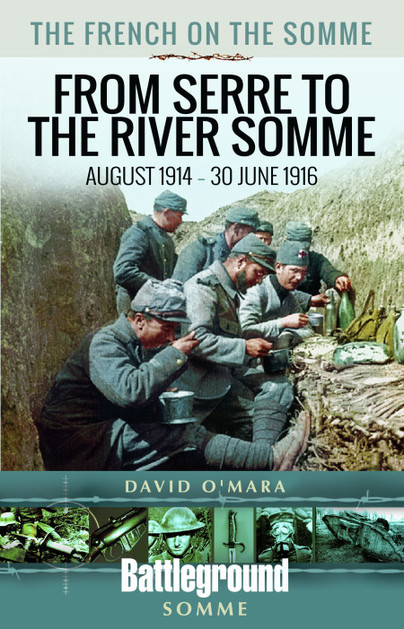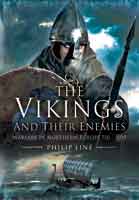The French on the Somme – From Serre to the River Somme (Paperback)
August 1914 - 30 June 1916
Imprint: Pen & Sword Military
Series: Battleground: WWI
Pages: 234
Illustrations: 120
ISBN: 9781526722409
Published: 18th June 2018
(click here for international delivery rates)
Need a currency converter? Check XE.com for live rates
For many British visitors, the fighting in the Somme starts on 1 July 1916 and few consider what happened in the area before the British took over the line, part in later 1915 and some in 1916.
In fact there was extensive fighting during the opening phase of he war, as both the French and Germans tried to outflank each other. Through the autumn and winter there was a struggle to hold the best tactical ground, with small scale but ferocious skirmishes from Beaumont Hamel to the Somme.
The conflict in what became known as the Glory Hole, close to the well known Lochnagar Crater, was particularly prolonged. Evidence of the fighting, mainly in the form of a large mine crater field, is visible today. The underground war was not confined to la Boisselle, with a similar crater field developing on Redan Ridge; whilst south of the Somme, to be covered in a future volume, great lengths of No Man's Land were dominated by mine craters.
Serre, best known to British readers for its association with the Pals Battalions on 1 July 1916, witnessed a significant, if local, French offensive in June 1915, with casualties running into the several thousands. It is a battle that has left its mark on the landscape today, with a French national cemetery and a commemorative chapel acting as memorials to the battle.
The book is introduced by a chapter describing the role of the area in the Franco-Prussian War of 1870-71, a war which arguably provided the seed bed for the outbreak of war in 1914. Several battles were fought in Somme villages that were to become the victims of war all over again forty plus years later.
As featured in
Stand To! Western Front Association, October 2019
Well researched, well written and concise this, like the other titles in the series, is an invaluable guide to the battlefield, providing not only directions and information, but historical accounts and context which sets these works apart form the mainstream.
The Great War magazine, March 2019
First-class guide. 10/10
As featured by
Lancashire & North West magazine, October 2018
As featured by
Militaria Magazine, September 2018
About David O'Mara
The late David O’Mara’s interests spanned back further than he could remember, it is quite possible that his (almost) life-long study of subjects around the First World War stemed from his receipt of one of the first editions of Rose Coomb’s ‘Before Endeavours Fade’ for a birthday present prior to a family holiday to the Ypres Salient in the late 1970s. This first trip to a Western Front battlefield only encouraged a vivacious hunger for hundred more trips – with his parents at first, and then alone or with friends before travelling with his own family – ensued over the following decades. Over the years, David visited the whole length of the Western Front several times over. Though interested in most aspects of the First World War, reading Blaise Cendrar’s ‘The Severed Hand’ at a young age encouraged an interest in the French side and David specialised in this study for many years, with the main focus of his battlefield visits for the past couple of decades being to the French sectors. David originally joined Western Front Association in 1983 and became the founding member and first chairman of the East Lancashire Branch in 2008. Since 2010, he had been the official research partner for the Western Front Association's ‘Remembered: On this Day’ project. David's interests also moved to the French army and their areas of operations and he built up a considerable resource of histories and illustrations on it. He explored and walked miles of the French front, from the North Sea to the Swiss border. With extensive knowledge of both the major allied armies, combined with his knowledge of the ground and ability to work with German sources, he was the ideal person to write about the French Somme, a part of the story of that terrible battlefield that had previously been largely neglected.






















